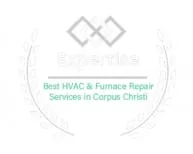Maintaining optimal indoor air quality is essential for a healthy living environment. With pollutants lurking in our homes, it’s important to equip ourselves with the right air quality solutions. This guide provides you with essential tips that are both easy to implement and effective in ensuring you breathe fresh and clean air.
1. Prioritize Ventilation in Your Home
Proper ventilation is key to maintaining fresh air indoors. Open windows regularly to allow fresh air in and stale air out. Utilizing exhaust fans in areas such as kitchens and bathrooms can help in reducing moisture and preventing mold growth. Moreover, ventilation helps in dispersing indoor pollutants, such as volatile organic compounds from cleaning products, which can accumulate in poorly aerated spaces. If your home is tightly sealed, consider adding mechanical ventilation systems like energy recovery ventilators (ERVs) to balance energy efficiency with air quality improvements.
In addition to mechanical solutions, simple changes such as moving furniture away from vents can enhance airflow. Maintaining good ventilation doesn’t need to be complex; even small, consistent efforts can yield significant benefits. For instance, positioning fans strategically to direct airflow can improve circulation and help break down stagnant air pockets. These strategies, combined with the effective use of windows and exhaust fans, create an ideal environment for minimizing indoor air contaminants.
2. Regular Maintenance of HVAC Systems
Your HVAC system plays a crucial role in circulating air throughout your home. Keeping it well-maintained ensures better air quality. Regularly check, clean, or replace filters to prevent dust and pollutants from clogging your system. A clean HVAC system functions efficiently, leads to lower energy bills, and provides a healthier indoor environment by minimizing dust and allergens. Schedule professional inspections annually to ensure components like ducts and coils are in optimal condition, thus preventing potential issues that could degrade air quality.
Monitoring the efficiency of your HVAC unit is not just about cleaner air, but also about avoiding larger mechanical failures. Routine HVAC check-ups help identify wear and tear that might otherwise lead to more severe mechanical breakdowns, often causing unintended emissions and air quality problems. Catching these issues early leads to cost savings in repairs and energy expenditure. Moreover, regular maintenance helps extend the lifespan of the unit, ensuring you can rely on it to maintain a comfortable and pollution-free indoor environment for years to come.
3. Adopt a No-Smoking Policy Indoors
Cigarette smoke is a significant source of indoor air pollution. Establishing a no-smoking rule inside your home can greatly reduce harmful pollutants, benefiting both smokers and non-smokers. The particles and chemicals from smoke can linger, attaching to fabrics and walls, leading to a persistent decrease in air quality. Even if you smoke near a window, the pollutants can still travel throughout the home, affecting everyone inside. Consider creating a designated outdoor area away from commonly used entrances to keep indoor air pristine.
4. Use Air Purifiers Wisely
Air purifiers are a great investment for those seeking air quality solutions. Choose a model that suits your home’s size and specific needs to effectively capture allergens, dust, and other particles. When selecting an air purifier, consider models with HEPA filters, which are known for removing particles as small as 0.3 microns. This makes them ideal for households with allergy sufferers, as they can capture common triggers like pollen, pet dander, and dust mite debris. Additionally, models with activated carbon filters can help neutralize odors and volatile organic compounds, further enhancing your home’s air quality.
Placement and maintenance are equally critical when using air purifiers. Ensure your device is positioned in rooms where you spend the most time, such as bedrooms or living areas, for maximum efficiency. Regularly cleaning and replacing the filters according to the manufacturer’s guidelines is essential to keep the purifier operating effectively. Moreover, if you live in an area with high pollution levels, consider running your air purifier more frequently. By doing so, you’ll maintain a fresh, clean air environment that supports your overall well-being.
5. Introduce Air-Purifying Plants
Houseplants not only add beauty to your home but also help purify the air. Some plants, like spider plants and peace lilies, are particularly good at removing toxins and improving overall air quality. These plants act as natural air filters, absorbing pollutants such as benzene and formaldehyde, thus contributing to a healthier indoor atmosphere. Incorporating various plants into different areas of your home enhances the aesthetic appeal while promoting better air wellness through increased oxygen levels and humidity balance.
While plants like snake plants are hardy and require minimal care, it’s essential to avoid overwatering which can lead to mold growth—a counterproductive factor for air quality. Select species that fit your lifestyle and light conditions, as healthier plants are more effective at air purification. Additionally, while plants like the Boston fern require more attention, they excel at removing air pollutants and are worth the investment if properly cared for. Air-purifying plants offer a low-cost, natural way to breathe cleaner air, making them an effective component of any air quality improvement strategy.
6. Eliminate or Reduce Use of Chemical Cleaners
Many household cleaning products contain chemicals that can contribute to indoor air pollution. Opt for natural cleaners or DIY solutions using simple ingredients like vinegar and baking soda. These alternatives are not only effective for cleaning but also significantly reduce the release of volatile organic compounds (VOCs) into your home’s atmosphere, which can exacerbate respiratory issues. For those new to natural cleaning, start by replacing one product at a time, such as switching from a chemically-laden surface cleaner to a simple vinegar solution.
Choosing unscented or naturally scented products can further decrease the chemical load in your home. Synthetic fragrances often contain phthalates and other harmful additives which compromise air quality. Switching to eco-friendly cleaning products not only benefits your health but is also better for the environment. Look for labels such as ‘fragrance-free’ or ‘biodegradable’ when shopping for products, or make your cleaning mixtures at home to ensure absolute control over the ingredients.
7. Keep Humidity Levels in Check
High humidity can lead to mold growth and dust mites, both of which adversely affect air quality. Use dehumidifiers and fix any leaks or water damage to maintain ideal humidity levels in your home. A simple hygrometer can help keep track of indoor humidity levels, ensuring they stay between 30-50% for optimal comfort and air quality. Installing exhaust fans in high-humidity areas, like bathrooms and kitchens, is another practical step to prevent mold and excess moisture accumulation.
Humidity not only affects air purity but also influences the comfort of your living environment. Excess moisture can warp wood furnishings and damage walls over time. Likewise, too little humidity can dry out skin and irritate respiratory passages. Maintaining balanced humidity aids in preserving both your home and your health. Consider using smart thermostats with humidity controls for more precise management, giving you the capability to adapt quickly to seasonal changes.










